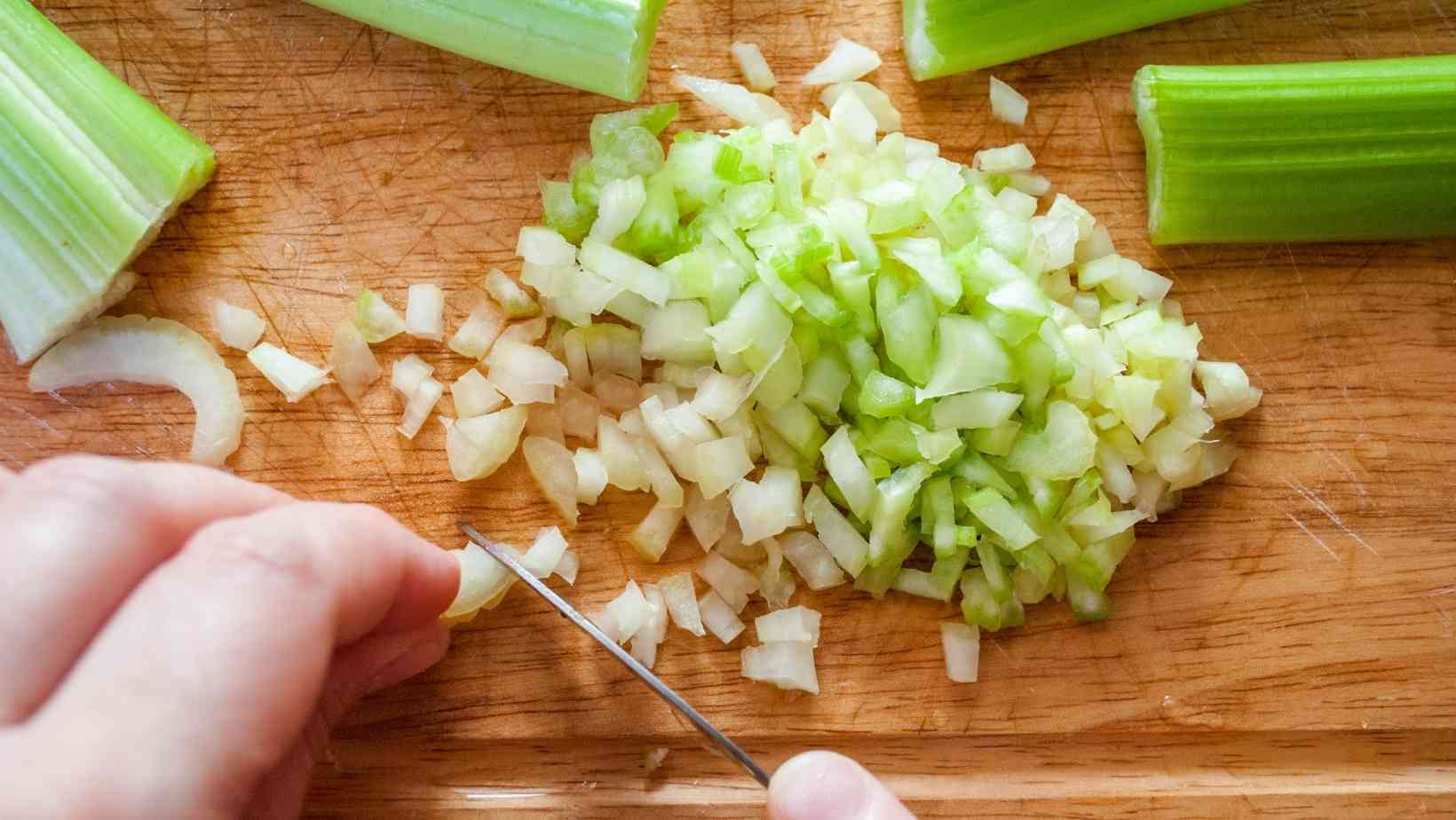Celery is a healthy food, but it's typically relegated to the bottom of the vegetable menu. Celery is often served with wings or in little bits in soup, but it has the potential to be a tasty and even desired addition to your healthy eating plan. Use your imagination to come up with different ways to cook celery to make it more appetizing and healthful.

Jump to:
Nutrients
Celery is low in calories and high in vitamins and minerals, with a 1-cup portion containing just 16 calories. You receive 40 milligrams of calcium for bone formation and 263 milligrams of potassium for strong muscles and a regular heartbeat. A serving of celery also contains trace amounts of magnesium, iron, and zinc. One cup of celery contains 3.1 milligrams of vitamin C, which helps to maintain a healthy immune system, and 453 international units of vitamin A, which helps to keep your eyes healthy. A serving of celery also contains trace levels of thiamine, riboflavin, and vitamin E.
Stuffed
Fill celery stalks with healthful fillings to boost the vegetable's nutritional content and make it more appealing. Fill celery stalks with low-fat cheese spread, which has some calcium. To add flavor and nutrition, top the cheese with chopped black olives or minced carrots. You could also top the cream cheese with chopped artichoke hearts and diced roasted red peppers, or mix it with chopped pimentos and walnuts and spread it inside celery stalks. Fill celery with peanut butter and add dried fruit like raisins or cranberries on top. This combination is high in protein and fiber, and it also contains a little amount of potassium. Another technique to make celery sticks more appealing is to stuff them with homemade tuna, crab, or chicken salad.
Tray of Vegetables
Fill a veggie tray with celery sticks. Along with the celery, add a variety of bright veggies. Brightly colored carrots, broccoli, cauliflower, grape tomatoes, and bell pepper strips are high in vitamin A, fiber, and potassium. Presenting celery in a colorful arrangement is more appealing and intriguing than serving it plain and alone. Serve the veggies with a low-fat sauce or hummus, as dips may make celery more appealing.
Curls of Celery
A simple stalk of celery might be monotonous and unappealing, but curling celery can improve its appearance. Cut small bits of celery from one stalk using a vegetable peeler. The tiny slices will curve up, giving them a more appealing appearance. Sprinkle celery curls over the top of vegetable soups, tossed green salads, and grilled meats. Celery curls may also be used to garnish chili, stews, and casseroles.
Cooked
Celery that has been cooked has a sweeter, milder taste than celery that has been uncooked. Cook celery in a vegetable stir-fry or add it to chicken noodle soup. To make a colorful side dish with fiber and vitamin C, saute chopped celery with onions and red bell peppers, or saute celery pieces with fennel and serve with lemon juice and fresh dill. To make a delightful and healthful side dish, toss cooked celery with sautéed zucchini and vinaigrette.
Celery is most often associated with a dish of spicy wings, but this light green vegetable is much more than that. Chopped celery has just 16 calories and no fat in a 1-cup meal and is rich in vitamins and minerals. Celery may also help to avoid the onset of some chronic illnesses. The highest nutritional value is found in light green celery that is crisp and firm.
Vitamin A
Vitamin A helps to maintain a healthy immune system and promotes proper reproduction. The vitamin improves good vision, facilitates cellular communication, and keeps your heart, lungs, and kidneys in good working order. Vitamin A is required in 2,333 international units per day for women and 3,000 international units per day for males. Celery provides 453 international units toward these objectives in a 1-cup meal.
Vitamin K
Vitamin K consumption should not exceed 90 micrograms per day. Vitamin K's most crucial job is to help your blood clot. According to the MedlinePlus website, the vitamin may also help senior people maintain a healthy skeletal system. Vitamin K is abundant in celery, with 29.6 micrograms per 1-cup serving.

Fiber
Celery, like other fruits and vegetables, is a good source of dietary fiber, and adding it to your diet may help you receive more of it. Males need 30 to 38 grams of fiber per day, while women require 21 to 25 grams. Fiber promotes a healthy digestive system and may aid in the prevention of constipation. Increasing your fiber intake may also help to lower your risk of heart disease and diabetes. Celery has 1.6 grams of dietary fiber in a 1-cup serving.
Health Advantages
Celery includes coumarins, which are natural molecules that aid in the reduction of free radical damage, which may cause long-term health issues. According to Michael T. Murray's book, "The Condensed Encyclopedia of Healing Foods," coumarins may help prevent cancer and promote the greater activity of particular white blood cells. According to research published in the "American Journal of Clinical Nutrition" in 2000, lutein found in celery may reduce your risk of colon cancer. Incorporating celery into your regular diet may also help to decrease blood pressure and cholesterol levels. Celery may be beneficial in the treatment of migraine headaches and muscular pains.
Tips
Fresh celery may be sliced and used for tossed green salad or stir-fry meals. In a vegetable, chicken noodle, or bean soup, add chopped celery. Celery is also a good addition to stew and chili dishes. To make a protein-rich snack, spread peanut or almond butter on celery sticks. Toss sliced celery with olive oil, minced onions, chopped red bell pepper, and garlic powder for a flavorful and nutrient-dense salad, or serve celery sticks with low-fat ranch dressing as a healthy side dish.




